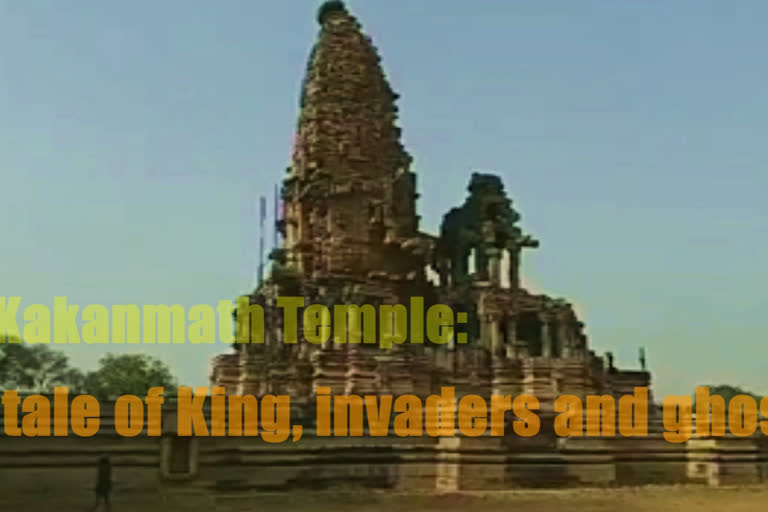Gwalior: Kakanmath temple of Morena in Madhya Pradesh seems dilapidated if you look from a distance, but steady as mountain as you come closer and observe.
The 11th-century temple was constructed on the orders of King Kirtiraj in Morena to fulfil the ardent desire of his Queen Rani Kakanwati.
It is a magnificent edifice even in its ruins and is remarkable for its sculptural wealth. Standing on a lofty ornate pitha and originally surrounded by subsidiary shrines, the temple comprises a sanctum enclosed by an ambulatory with three transepts, antarala, hypostyle gudhamandapa with lateral transepts, and a mukhamandapa approached from the east by stairs.
11th-century temple
The temple is notable for its precise (C.A.D. 1015-1035) date and grand dimension combined with the rich quality and variety of sculptures.
The 110 feet temple has no concrete or binding agent, the entire structure is just relying on the weight of the stones in strategic positions since the 11th century. There are several legends associated with the structure.
Earthquakes and further damage from invaders have taken its toll on Kakanmath. The area surrounding the temple platform is littered with carved masonry from this and those subsidiary shrines.
Historians believe that Rani Kakanwati was a worshipper of Lord Shiva. The king built the temple to show his love for the queen and named it 'Kakanmath' after her name.
Another faction believes that the name of the temple is derived from the culmination of two words, Kanak (gold) and maṭha (shrine).
The local lore also goes that the historical Tomar rulers had built the Kakan Math temple.
Mughal rulers attacked the temple
Kakanmath was destroyed by the armies of Aibak and Iltutmish in the 13th century and since then it fell to neglect and obscurity. It was only in the 20th century that it was reclaimed as Indian heritage site.
The remains of the fragmented sculptures are still there in the temple complex.
Ghosts built the temple
The villagers believe that ghosts built the temple in one night. They say that the ghosts took off in the morning when they saw humans, that is why the temple remains incomplete to this date. The villagers even say that the temple will automatically crumble down one day when a marriage procession of 7 deaf grooms will be taken out in front of the temple at the same time.
Lack of connectivity to the place through any mode of transport makes it difficult for people to explore the site. It is currently under the supervision of the Archaeological Survey of India, Gwalior Region.
Also read: Nurses who bring hope to the sick people in Naxal villages



